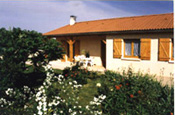
Stirling engine
Ce site appartient au réseau de sites relatifs aux moteurs à air chaud
Today, research, defense and space are interested by Stirling engine. That portends a future assured for this engine. Many devices we use routinely today were born in these areas …
The foreseeable applications of the Stirling engine are:

It is possible to envisage a generalization of the use of Stirling engine as an auxiliary source of electricity for submarines and surface vessels, like what is being done today in the Swedish and Australian navies. An appropriate choice of fuel (liquid oxygen and liquid hydrogen, for example) would reduce the risk of pollution in case of an accident.

Why not take advantage of advances in the military sphere? If we can not consider the use of the Stirling engine as the mean of main propulsion, we can imagine its use as an auxiliary source of electricity and heating. Its vibratory level and its faint noise are great assets for its use.

The recovery of all energies released directly to the atmosphere or into rivers can be a
motivation for the industry. Indeed, many industrial processes in the areas of chemistry or
generation of electricity emit huge quantities of energy in the environment. For example, a nuclear plant
sends twice more energy to the river than in the electric wires!
Moreover, one estimates at 10% the energy dissipated in these same electric wires. One thus sees the
interest of the cogeneration (electricity + heat) and of a production decentralized nearest the
consumers and dimensioned with their needs.

It is probably there that the Stirling engine will develop more. This will be a way to make
electricity, heat for home and to produce domestic hot water. The residential electric power represents
now about 8% of total production. This allows great prospects for the Stirling engine. The primary energy,
in this case, may be the sun with reflective dishes, wood or waste (cereal scraps, dungs …).
The overall performance in cogeneration can verge on the 100%.
Moreover, consumption necessary to the operation of the refrigerators or freezers can represent the
quarter of the total electricity consumption. If one replaces the traditional cycle of Rankine by the
cycle of Stirling, great economies can be envisaged.Thus it is possible to avoid the destruction of the
ozone layer by traditional gases.
In the same spirit, one can consider heat pumps using the cycle of Stirling for heating and/or
air-conditioning. This use may be conceived for a stand-alone house (chalet, cottage…) or for a house
connected to the electrical grid with sale or purchase of electricity depending on the season
This site was created and is maintained by Pierre Gras.
Thank you with all the people who contributed their shares: articles, photographs, vidéos, worksheets…
The author is opened with any suggestion allowing to improve this site for happiness of everybody. Finally, a big
thank you to Robert Stirling !
"stirlinengine.fr" site by Pierre Gras is licensed under a
Creative Commons License
 .
.
This site meets XHTML and CSS standards. To get the best, use a browser such as Firefox, Chrome, Safari, Opera... they also adhere to these standards.